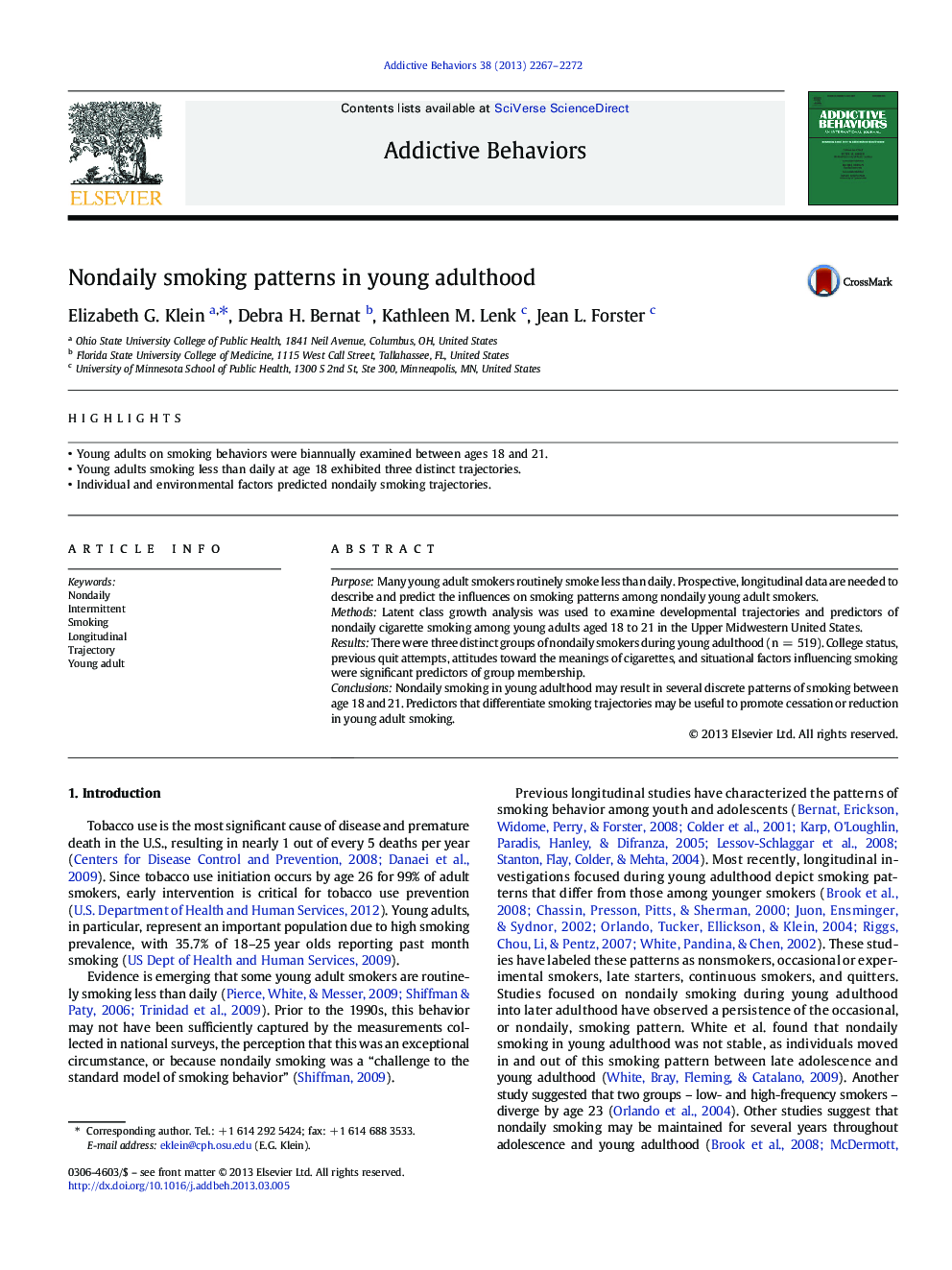| Article ID | Journal | Published Year | Pages | File Type |
|---|---|---|---|---|
| 10443312 | Addictive Behaviors | 2013 | 6 Pages |
Abstract
PurposeMany young adult smokers routinely smoke less than daily. Prospective, longitudinal data are needed to describe and predict the influences on smoking patterns among nondaily young adult smokers.MethodsLatent class growth analysis was used to examine developmental trajectories and predictors of nondaily cigarette smoking among young adults aged 18 to 21 in the Upper Midwestern United States.ResultsThere were three distinct groups of nondaily smokers during young adulthood (n = 519). College status, previous quit attempts, attitudes toward the meanings of cigarettes, and situational factors influencing smoking were significant predictors of group membership.ConclusionsNondaily smoking in young adulthood may result in several discrete patterns of smoking between age 18 and 21. Predictors that differentiate smoking trajectories may be useful to promote cessation or reduction in young adult smoking.
Related Topics
Life Sciences
Neuroscience
Behavioral Neuroscience
Authors
Elizabeth G. Klein, Debra H. Bernat, Kathleen M. Lenk, Jean L. Forster,
